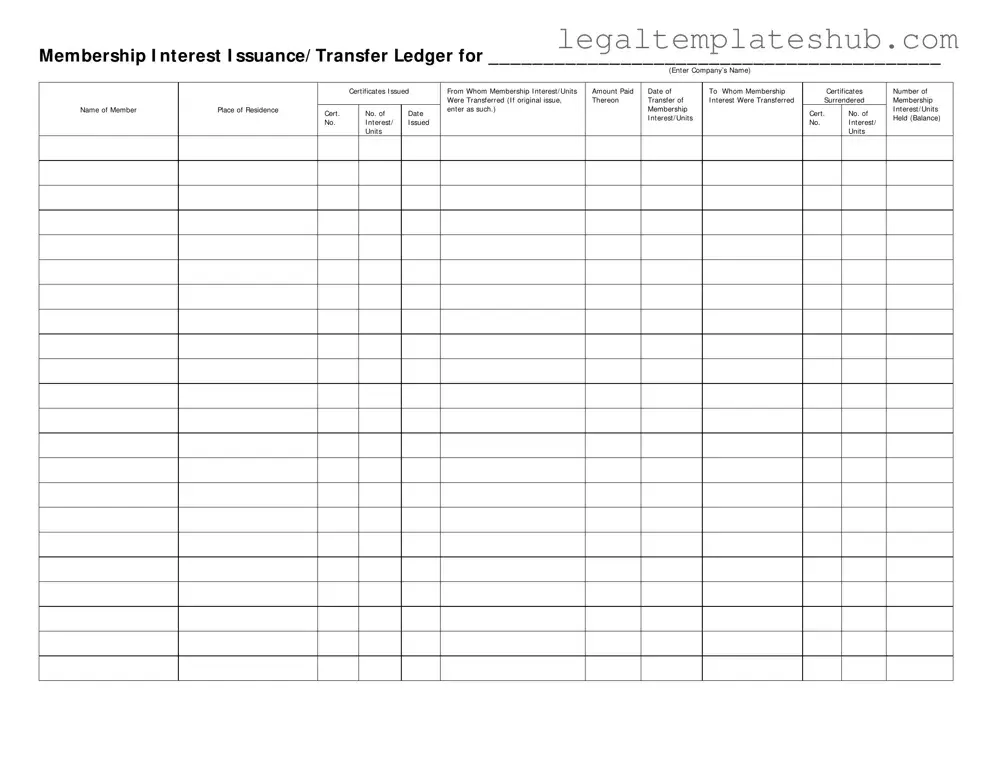Blank Membership Ledger PDF Form
The Membership Ledger form is a crucial document that tracks the issuance and transfer of membership interests within a company. It records vital details, including the company name, certificates issued, and membership interest transactions. Ensure accurate and timely documentation by filling out the form below.
Access Editor
